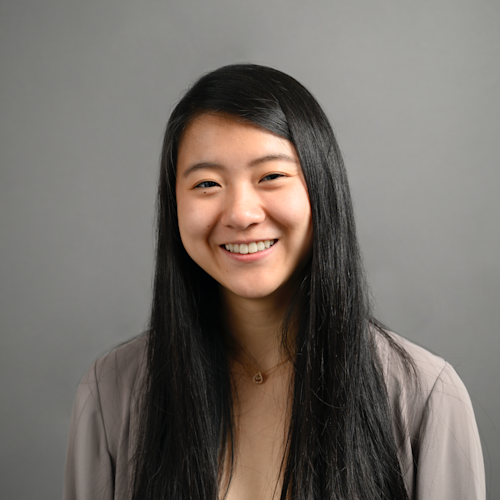
Olivia has always considered herself a builder. From building mini rockets and a ukulele from scratch to making her own tattoo gun and using it on herself, she has pretty much been a hacker since day one. It wasn’t until her friends convinced her to apply for her first hackathon that she got hooked and she joined the world of hackers.
Prior to joining the hacker community, Olivia wanted to be a researcher. This all changed after Hack the North 2017 where she realized that software was more interesting to her and she switched to computer science from biology. The community has brought her many friends who have helped her to grow as a coder and some of whom she will be working with on BioPeels this summer in California. Biopeels is a tech startup developing biocompatible and biodegradable packaging to increase the shelf-life of fresh produce. This product received funding and is collaborating with Sobeys, Canada’s second-largest food retailer, to develop green packaging. This is in line with Olivia’s goal of becoming a tech entrepreneur, incorporating the skills she has learned through the hacker community.
Hackathons not only taught Olivia a plethora of tools and frameworks, but they also taught her how to dream big. She says, “After seeing insane hackathon projects that were completed in a mere 36 hours... I’ve come to the conclusion that as long as it doesn’t break the laws of physics, it’s doable.”
Her favorite project was GluClose which was an intersection between her interests in software and biology. At PennApps XVIII, her team created an emergency diabetic glucometer which, instead of using blood to detect blood glucose levels, used a non-invasive method to measure blood glucose levels through saliva. The system used electricity-generating mud bacteria that created a voltage proportional to the amount of sugar it ate. The more sugar it ate, the more electricity was produced and measured. The project as a whole included the biology aspect, the hardware component, and a mobile app for viewing results which reflected the various talents of the team.
Quick Facts

Olivia has always considered herself a builder. From building mini rockets and a ukulele from scratch to making her own tattoo gun and using it on herself, she has pretty much been a hacker since day one. It wasn’t until her friends convinced her to apply for her first hackathon that she got hooked and she joined the world of hackers.
Prior to joining the hacker community, Olivia wanted to be a researcher. This all changed after Hack the North 2017 where she realized that software was more interesting to her and she switched to computer science from biology. The community has brought her many friends who have helped her to grow as a coder and some of whom she will be working with on BioPeels this summer in California. Biopeels is a tech startup developing biocompatible and biodegradable packaging to increase the shelf-life of fresh produce. This product received funding and is collaborating with Sobeys, Canada’s second-largest food retailer, to develop green packaging. This is in line with Olivia’s goal of becoming a tech entrepreneur, incorporating the skills she has learned through the hacker community.
Hackathons not only taught Olivia a plethora of tools and frameworks, but they also taught her how to dream big. She says, “After seeing insane hackathon projects that were completed in a mere 36 hours... I’ve come to the conclusion that as long as it doesn’t break the laws of physics, it’s doable.”
Her favorite project was GluClose which was an intersection between her interests in software and biology. At PennApps XVIII, her team created an emergency diabetic glucometer which, instead of using blood to detect blood glucose levels, used a non-invasive method to measure blood glucose levels through saliva. The system used electricity-generating mud bacteria that created a voltage proportional to the amount of sugar it ate. The more sugar it ate, the more electricity was produced and measured. The project as a whole included the biology aspect, the hardware component, and a mobile app for viewing results which reflected the various talents of the team.



